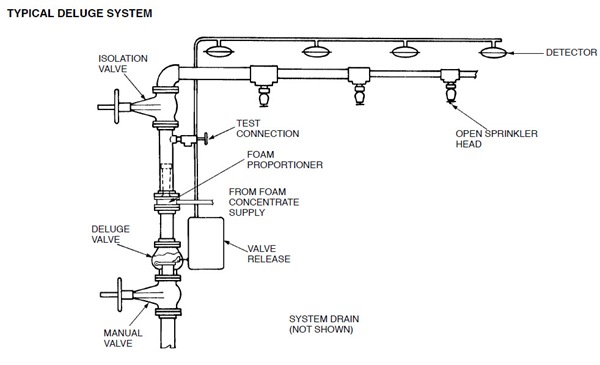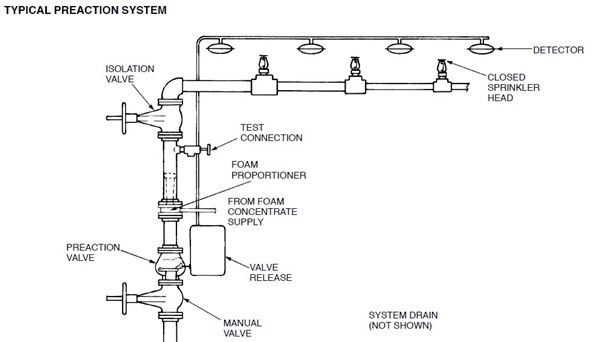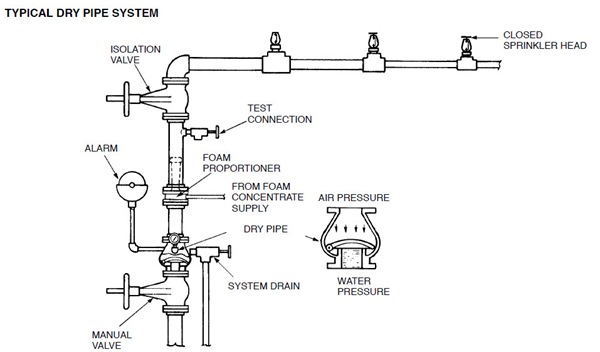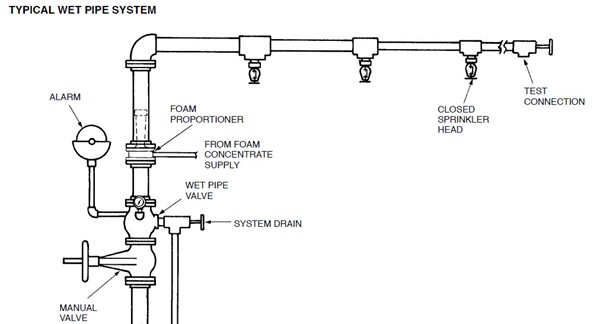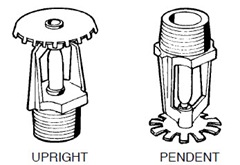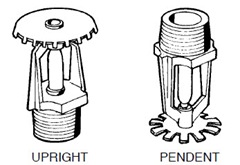In the deluge system, all sprinklers are open and normally there is no water in the piping. When fire occurs, a supplementary detection system senses the fire and automatically
opens a water control valve. This allows water to flow through the piping system to all sprinklers.
